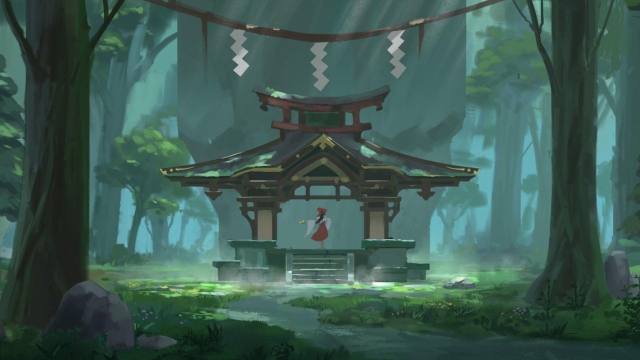Top Ten Sacred Sanctuaries: The Ultimate Shrine Rankings in Japan

Japan is a land steeped in rich cultural heritage and spiritual significance, where sacred sanctuaries dot the landscape, each telling its own unique story. The intertwining of nature and spirituality creates awe-inspiring spaces that attract not only devout practitioners but also travelers seeking to immerse themselves in the tranquility and history of these revered sites. The serene beauty and artistic craftsmanship found in these shrines often leave visitors with a profound sense of peace and reflection.
In this article, we delve into the top ten sacred sanctuaries in Japan, offering a curated guide to some of the most significant and breathtaking shrines the country has to offer. From ancient structures nestled in lush forests to iconic landmarks standing proud in bustling urban settings, these shrines embody the essence of Japanese spirituality and tradition. Join us as we explore the ultimate shrine rankings in Japan and discover what makes each of these sites a must-visit for anyone intrigued by the spiritual heart of this remarkable nation.
Criteria for Ranking
When evaluating the top sacred sanctuaries in Japan, several key factors come into play to ensure a comprehensive ranking. Historical significance is at the forefront, as many of these shrines are deeply rooted in Japanese culture and tradition. Their age, the legends associated with them, and their role in historical events contribute significantly to their prominence and relevance in contemporary society.
Architectural beauty is another crucial criterion. The design, craftsmanship, and the aesthetic appeal of shrines draw millions of visitors each year. Structures that showcase traditional Japanese architecture, including intricate details and harmony with nature, are particularly valued. Unique features such as torii gates, sacred forests, and seasonal festivals enhance a shrine’s allure, making them stand out in the rankings.
Lastly, spiritual importance plays a vital role in determining a shrine’s position. The number of visitors, the shrine’s reputation among practitioners of Shinto, and its role in community rituals and festivals can elevate a sanctuary’s status. Shrines that are recognized as powerful places of worship, known for specific deities or blessings, resonate deeply with both locals and tourists, solidifying their place among the top sacred sanctuaries in Japan.
Top Ten Sacred Sanctuaries
Japan is renowned for its spiritual heritage, with countless shrines dotting its landscape. However, certain sanctuaries stand out due to their cultural significance, architectural beauty, and serene environments. These sites not only reflect the rich traditions of Shinto but also contribute to the spiritual fabric of Japanese society. Here we celebrate ten of the most revered shrines that attract pilgrims and visitors alike.
First on the list is Ise Jingu in Mie Prefecture, which is dedicated to the sun goddess Amaterasu. This shrine is considered the most sacred in Japan and is revered for its magnificent architecture and deep-rooted history. The current buildings are meticulously reconstructed every 20 years, demonstrating a commitment to tradition and renewal that resonates throughout Japanese culture. Tottori’s Fushimi Inari Taisha ranks high as well, famous for its thousands of vibrant red torii gates winding up the sacred Mount Inari. This shrine, dedicated to the deity of rice and agriculture, is a symbol of prosperity.
Another remarkable sanctuary is the Meiji Shrine in Tokyo, a tranquil oasis dedicated to Emperor Meiji and Empress Shoken. The serene forested area surrounding the shrine offers a peaceful retreat from the bustling city. Similarly, the Kasuga-taisha in Nara is noted for its beautiful lanterns and picturesque setting, reflecting the deep connection between nature and spirituality. Each of these sanctuaries not only serves as a place of worship but also embodies the essence of Japan’s spiritual journey.
Cultural Significance of Shrines
Shrines in Japan hold immense cultural significance, serving as vital links between the spiritual world and daily life. They are not only places of worship but also centers for various traditional practices, festivals, and rituals that have been passed down through generations. Each shrine is a living testament to the customs and beliefs of local communities, attracting visitors who seek both spiritual solace and a deeper understanding of Japan’s rich heritage.
The design and location of shrines often reflect the natural environment, embodying the Shinto belief in the sacredness of nature. Many shrines are situated in serene, picturesque settings, making them popular spots for reflection and meditation. This integration of architecture with nature creates a harmonious space that encourages visitors to connect with the spiritual essence of the landscape while honoring the deities enshrined there.
Moreover, shrines play an essential role in the social fabric of Japanese society. They serve as gathering places for community events, celebrations, and life milestones such as weddings and coming-of-age ceremonies. By participating in these rituals, individuals affirm their cultural identity and strengthen their ties to their communities, highlighting the ongoing relevance of shrine traditions in contemporary life.
Visiting Tips for Sacred Sites
When visiting sacred sites in Japan, it is essential to respect the cultural traditions and customs associated with each shrine. Visitors should dress modestly and behave respectfully, avoiding loud conversations or disruptive actions. Familiarizing yourself with basic etiquette, such as bowing when entering a shrine or following the purification rituals, will enhance your experience and show appreciation for the spiritual significance of the site.
Another important tip is to plan your visit to coincide with special ceremonies or festivals that may be happening at the shrine. Many sacred sites host seasonal events that offer unique insights into local customs and traditions. Check the shrine’s official website or local tourism resources for a calendar of events, as these can provide a more immersive experience and deepen your understanding of the site’s cultural importance.
Lastly, consider visiting during off-peak hours to appreciate the serenity of these sacred spaces. Early mornings or weekdays can offer a quieter environment, allowing you to connect more deeply with the surroundings. Always remember to take your time and approach each shrine with an open mind, allowing the atmosphere to resonate with you as you explore these remarkable sanctuaries.


